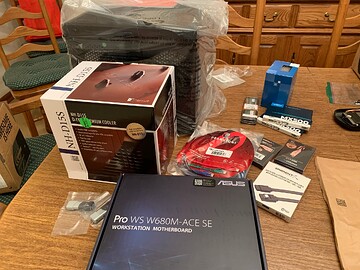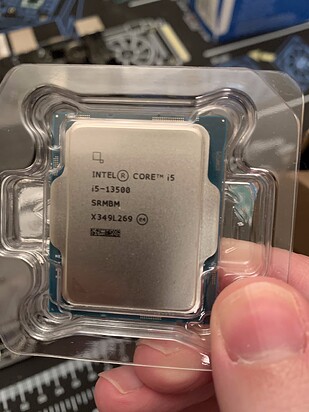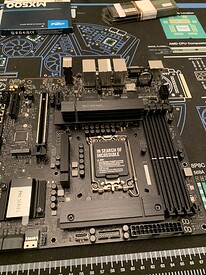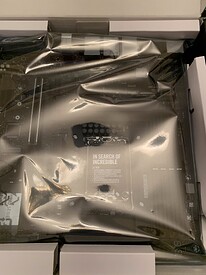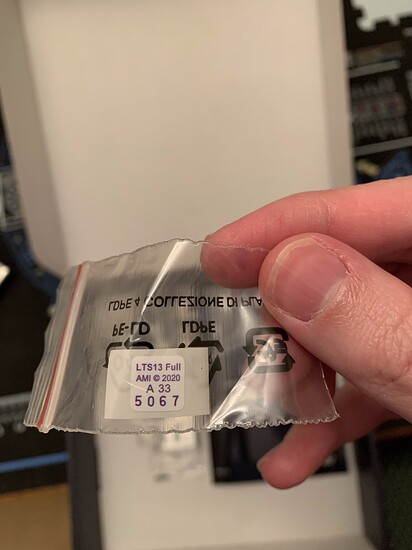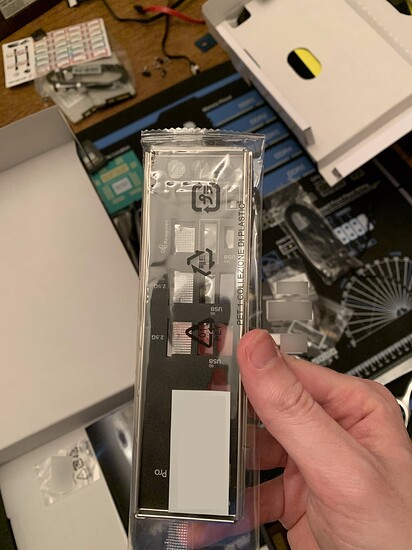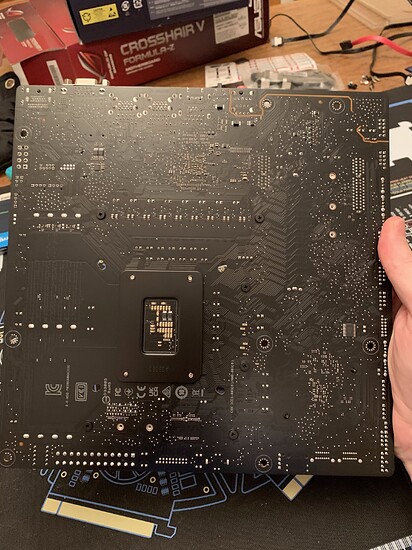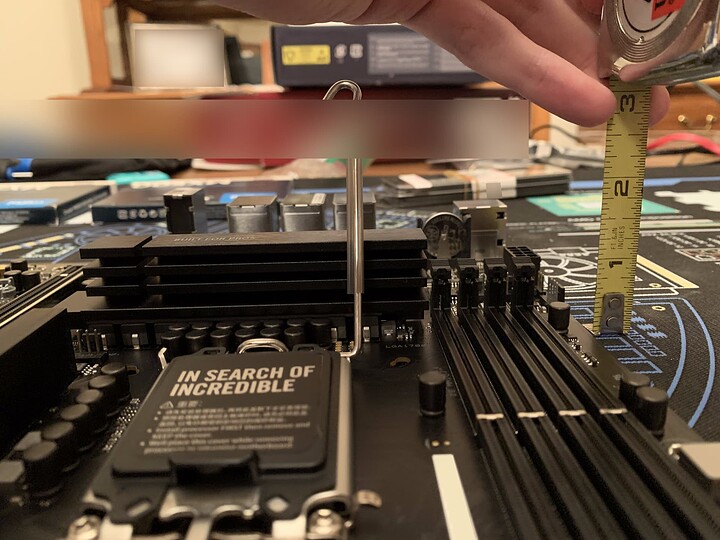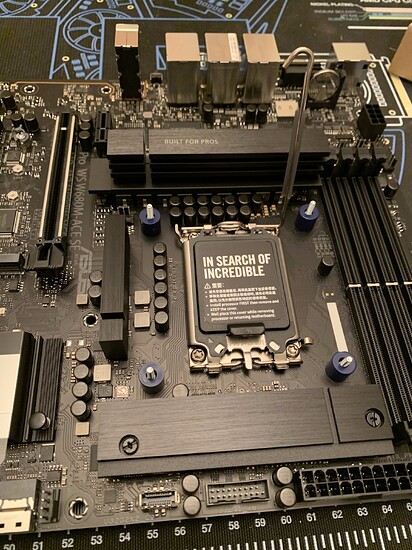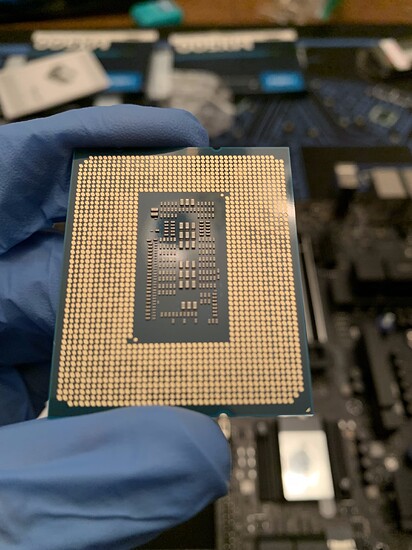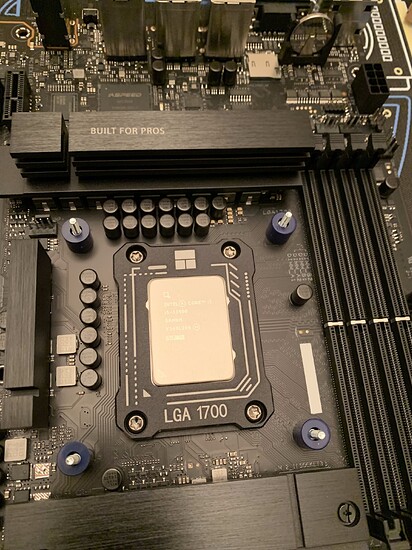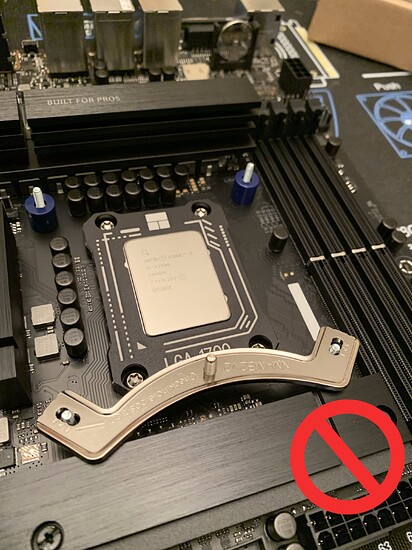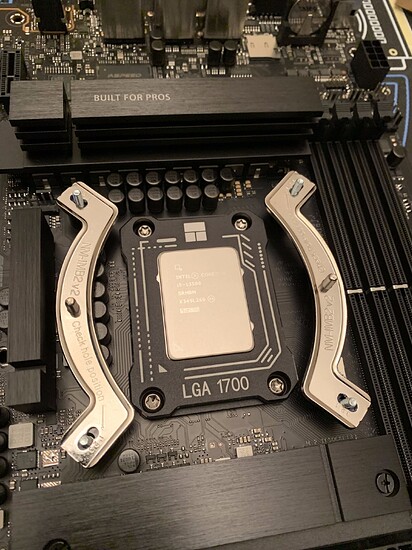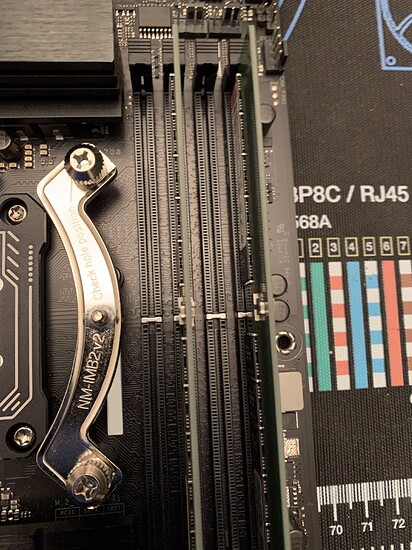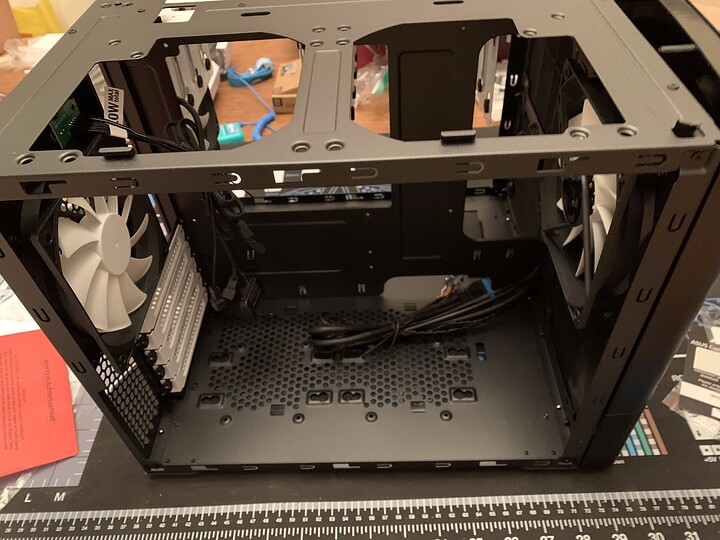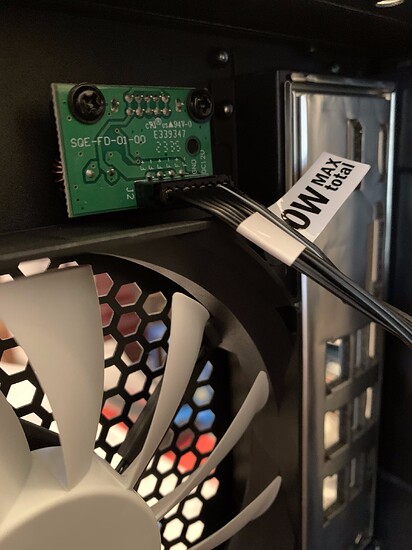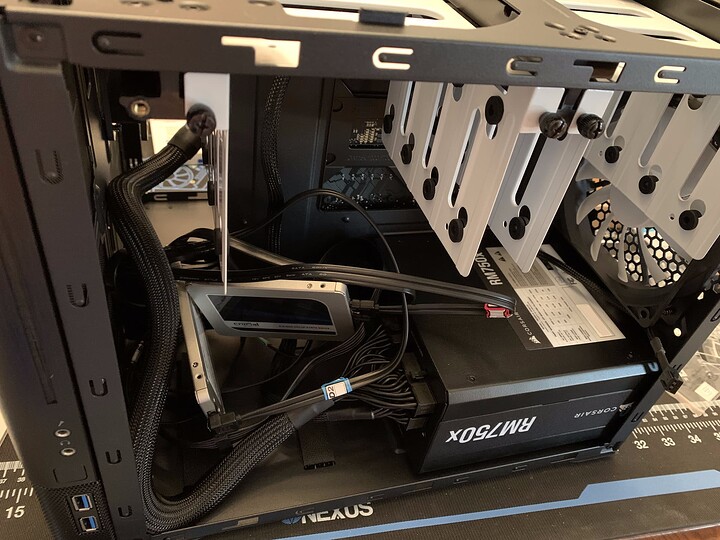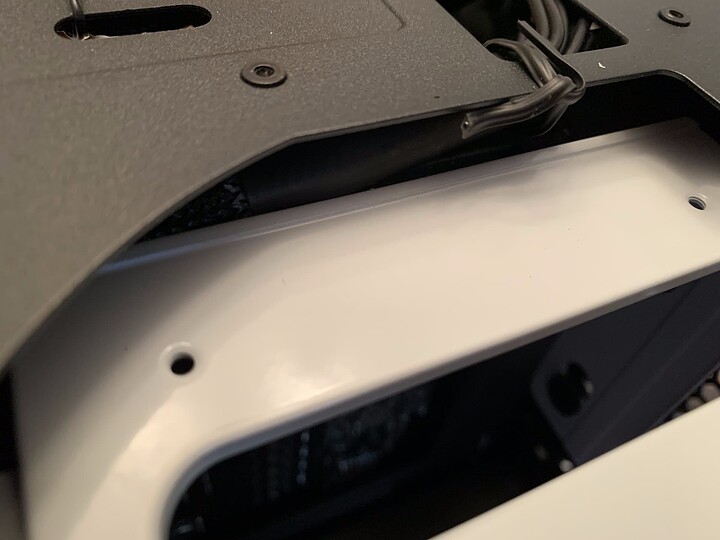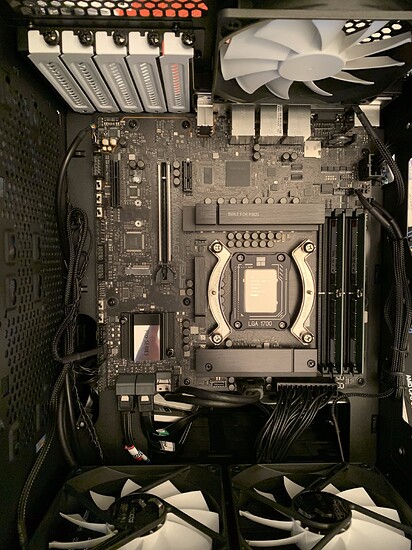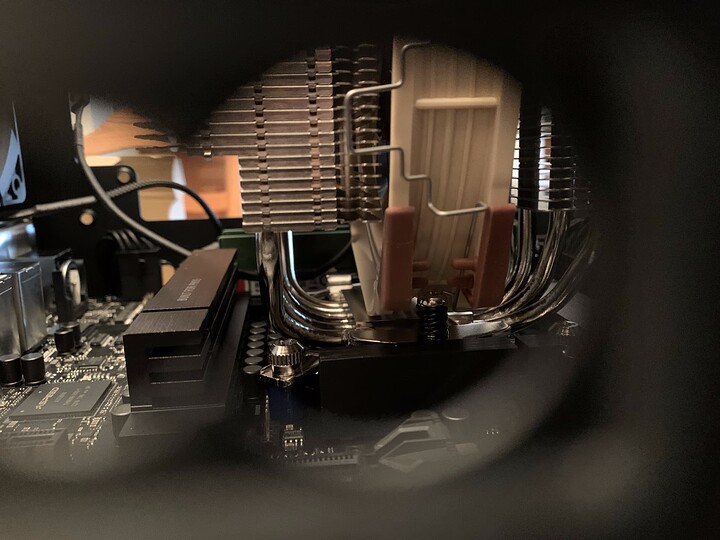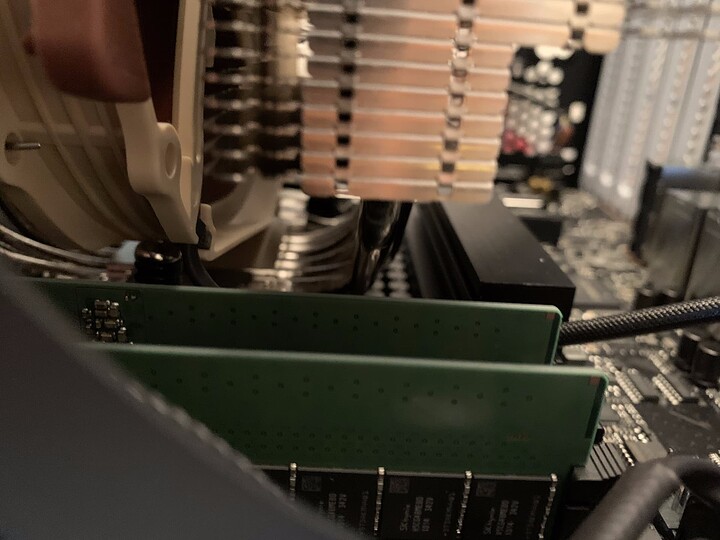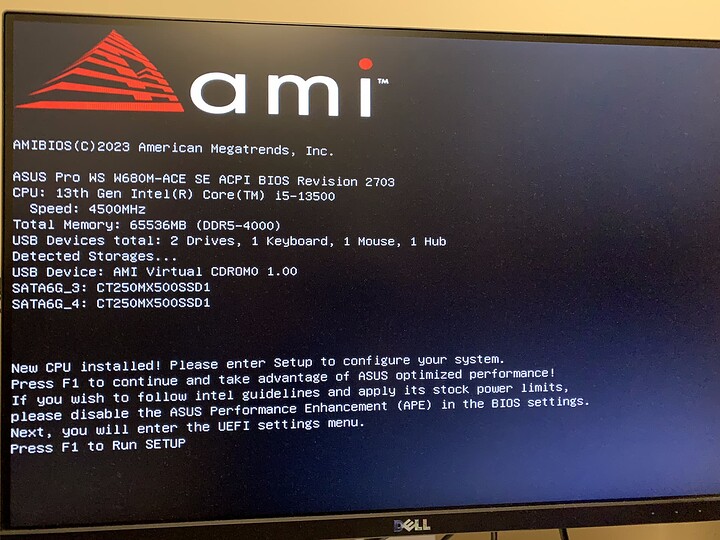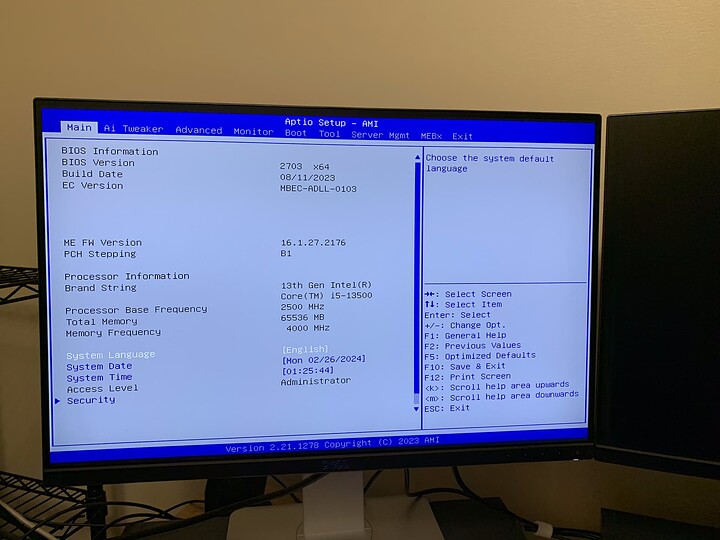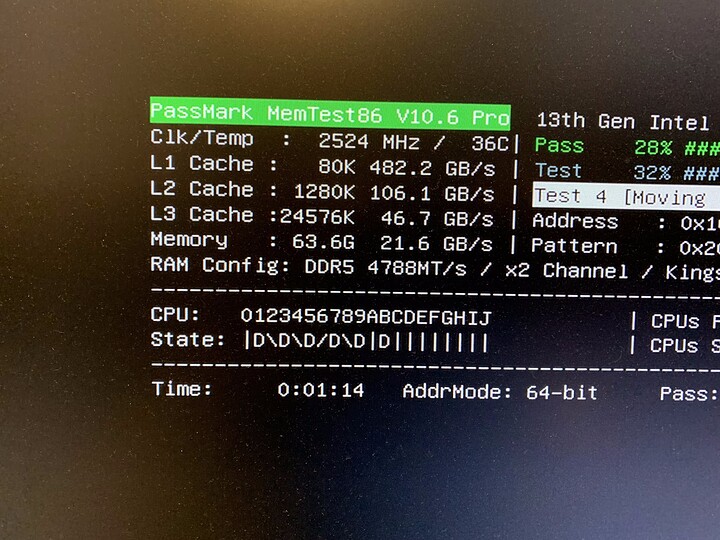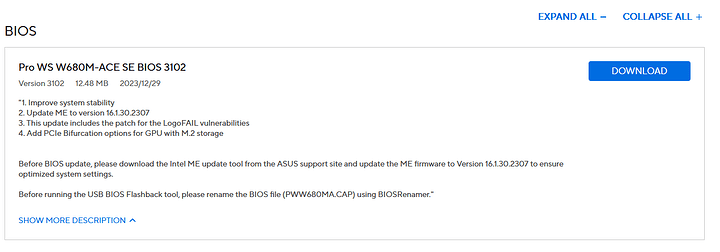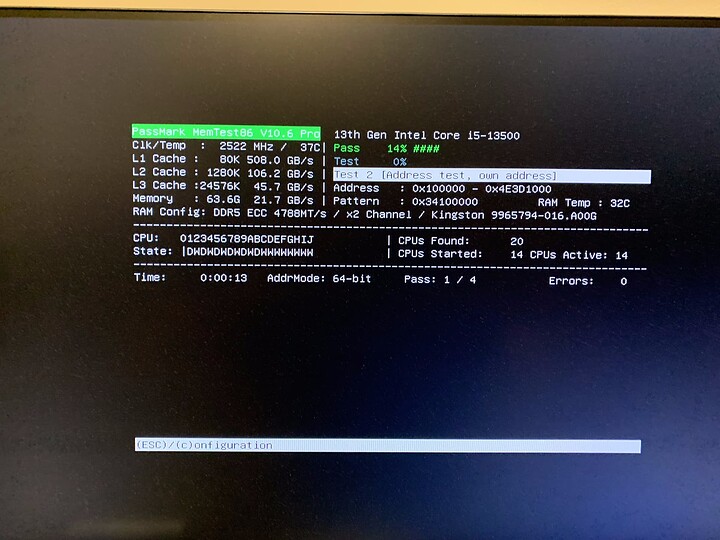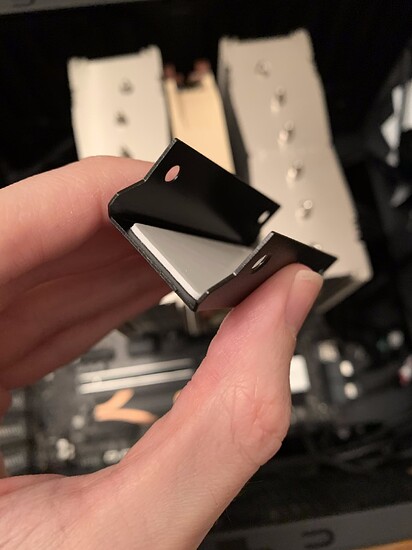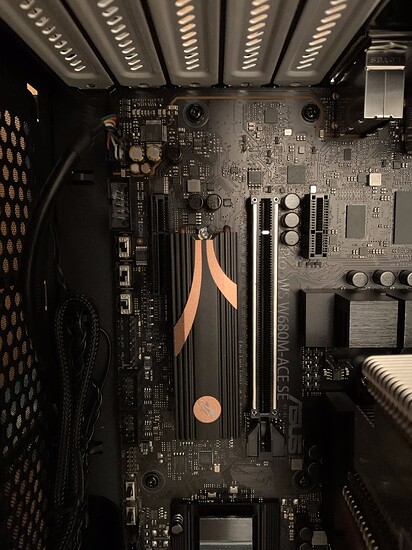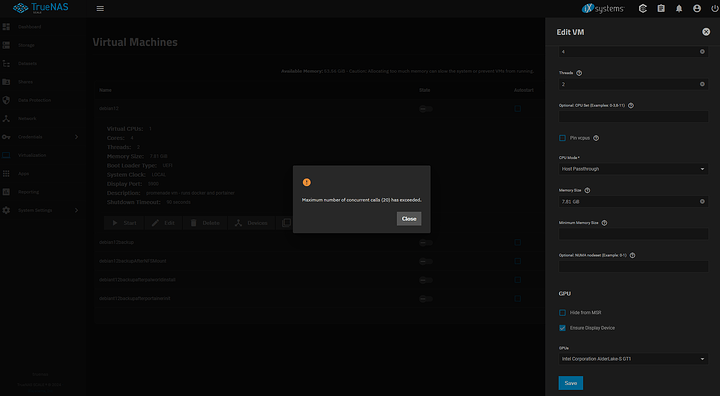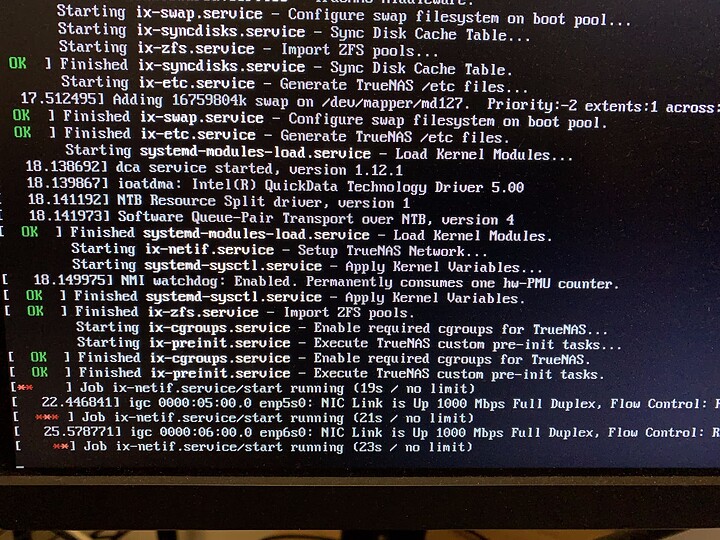The build
Opening up the motherboard first, it came in an antistatic bag. There was also this really weird, sticker?
Not sure what A33 5 0 6 7 means… perhaps it’s a QC thing? If anyone has a guess, leave a comment. For all I know, it could be the combo to someone’s luggage at ASUS.
The motherboard also came with the I/O shield.
For a $370 motherboard in 2023, it’s a bit disappointing that it doesn’t come pre-installed.
Since I’m going to be doing the LGA1700 bracket mod, here’s a picture of the back of the motherboard. The part of the CPU bracket that faces away from the motherboard is black:
You might be wondering, why even note this? When doing the mod on my main rig, I put the backplate on backwards, so I take pics of them every time now.
One thing that has always worried me about this build was the lack of information about the heatsink height. I’ve asked ASUS Support about this, and the only answer I get is something along the lines of “Thank you for contacting us. I’ve elevated this ticket and will get back to you in 2 to 3 days.” for the past few weeks. ASUS must have a really, really tall tower.
While not super scientific (or precise) here’s a rough measure of the height of the heatsink next to the CPU:
When installing the anti-bend frame on my main gaming PC, the backplate fell off. To prevent that this time, I installed the secu-firm blackplate and screws for my DH-15S first this time, to see if they’d hold it into place. (They did)
After that, I lifted up the lever like you normally would for installing a CPU. I completely forgot if it’s install the CPU and lower the arm for the bending frame or take the ILM off without lowering the lever, so for those of you with bad memory like me:
When installing the LGA1700 frame, lift the lever, place the CPU in the socket, give a little jiggle to make sure it’s secure, then with the lever still up, unscrew each of the ILM screws.
You then put the contact frame over the socket, and insert the screw into each hole. You want to reverse the screws in each hole until they make a ‘click.’ Then, from the position they made the click in, screw 90 degrees in the opposite direction (Instead of unscrewing them, you’re now screwing them in.) You do this diagonally, and keep going until you can’t screw it in gently.
When planning out this build, I was pretty frightened that the CPU cooler would exhaust out the top, and screw with airflow. However, when putting the secufirm brackets on the top, they would not lay flat when mounted in this position:
That pesky m.2 heatsink is in the way. You might be able to have the heatsink in this awkward position without it, but I do intend on using both m.2 slots.
Putting in ECC RAM was kinda strange, coming from building gaming PC’s in the past: Without the heatsink, it’s kinda awkward to push down from the top. What did work was grabbing the sides and pushing down that way. On this motherboard, with 2 sticks of RAM, you’ll want to use slots A2 and B2 like so:
It would’ve been nice for this $370 motherboard in 2023 to have levers on both sides of the RAM slot, but you’ll only have it at the top.
The NVMe drive was installed to the slot right next to the CPU. There’s this small thermal square that ASUS recommends for single sided NVMe drives, but not dual sided. For the Sabrent Rocket 4 Plus drives, the 1TB is the only single sided NVMe, so I didn’t install the additional thermal square.
Here’s one spot where I goofed: The motherboard doesn’t include a heatsink for the second NVMe drive, so I’ll be ordering a sabrent heatsink or something like that to cover it. I sound like a broken record at this point, but surely for a $370 motherboard in 2023, it would have been nice to include it.
With just about everything installed on the motherboard, sans the NH-D15S, which I’ll install in the case later, it’s time to move on to the case.
The Case:
The Node804 has two main compartments. The first that you see above is where the motherboard sits, and the one in the back is where the bulk storage goes. Each compartment has room for 2 intake fans at the front, a fan at the back, and spots on the top for more cooling. (Though in the storage side, the usefulness is questionable with the drive brackets in the way.)
The included fans seem to be hooked up to a fan controller, which you can switch from low speed, medium speed, and high speed with a physical switch.
Since I’m going to control the fans in software, I was happy to see that the cable can be disconnected from the controller fairly easily by hand.
Next came installing the motherboard standoffs, the PSU, and doing some basic cable labeling. The Node 804 has 2 places to mount sata SSD’s but they both have some caveats.
The first position is at the front of the case, which makes cable management tricky, along with replacement in the future should one of them kick the dust.
The second position is on the floor of the cpu compartment of the case. However, the SATA power cables make this difficult as the drives are lifted off of the bottom by the sata power cable.
In the end, I chose the route of least resistance:
Yeah, it’s not pretty, but no one will see it. While we’re back here, lets talk actual cable management. I’ve found that you can tuck the CPU power cable behind the two HDD cages, by taking them out first, and then routing it through the top of the case. There’s even a tie down point up here. At the end, you end up with something that looks like this:
I’ve screwed in the HDD cages all the way and have removed them again to check for any scratches or dents in the CPU power cabling, but haven’t been able to see any, so it should be good to go. (Your mileage may vary with this one depending on how thick your cables are.)
Since I don’t have my bulk storage in yet, there’s nothing in this compartment that needs extraordinary cooling, so the exhaust fan on this side was moved to the cpu side of the case to help out as intake. Here’s what it looks with some amateur cable management right now:
OK, time to put on the CPU cooler. I’m going with the NH-D15S, since I heard that it can work on this motherboard, and because it’s scientifically proven that owls are the coolest birds.
Here’s some guerilla-style photography to show how much clearance there is with the NH-D15S:
And here’s what it looks like from the window of the case. There’s about maybe 3/4 of an inch between it and the window.
Whew! That was a lot of typing 
Next time I’ll be going over how the initial setup went and any pitfalls encountered. For now, time to get some sleep!

